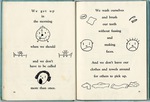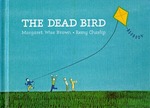It appears that one of the hits of the 2005 literary conference season was Prof. Sharon McQueen's "The Story of The Story of Ferdinand: The Creation of a Cultural Icon Through Performance Versions and Variations."
While I remember it very fondly from my own childhood, and even though it's one of the kid's favorites, I have to admit, 1936 has always struck me as an extremely odd year for the publication of a pacifist story set in Spain.
Anyway, Prof. McQueen presented her findings on the history, culture, and reception of Ferdinand at several conferences in quick succession. Word travels fast, but not fast enough for me to have heard about it before yesterday. I reproduced the abstract from the talk at the Children's Literature Association last summer [June 2005] in Winnipeg, Manitoba below, because it's only available in Google's cache at the moment. It seems to be the fullest online account of McQueen's work, which I'm now angling to learn more about.
The Story of The Story of Ferdinand: The Creation of a Cultural Icon Through Performance Versions and Variations"
Sharon McQueen, The University of Wisconsin-Madison
Short Abstract: This historical/cultural study of the 1936 picture book, The Story of Ferdinand, explores possible reasons for the book's reception and the implications of a work of such impact. Drawing upon Reception Theory and Semiotics, the investigation is a complex social, political, historical, literary, and bibliographic discourse into cultural iconology.
Long Abstract: The Story of _The Story of Ferdinand_: The Creation of a Cultural Icon Through Performance Versions and Variations The 1936 picture book, _The Story of Ferdinand_, was immediately successful and immediately controversial. Individuals and groups often embraced or rejected the text, depending on their perceived meaning of it. This reception was not restricted to the United States but spread onto a world-wide stage. Hitler was said to have ordered the book burned, while Stalin allowed it as the only non-communist children's book in Poland. Gandhi reportedly called it his favorite book. Eleanor Roosevelt wrote about _Ferdinand_ in her syndicated newspaper column, "My Day", and the title remained on bestseller lists for months. The work was adapted on numerous occasions for various performance venues, including stage, screen, and song. There were several concert versions, a WPA (Work Projects Administration) marionette show, and even a rock opera - to name but a few. The 1938 Oscar-winning Disney cartoon pushed _Ferdinand_ even further into the limelight. The work is acknowledged as a classic of peace education and is popular to this day. In the almost seventy years since its initial publication it has never been out of print. This historical/cultural study explores possible reasons for such a prominent reception and the consequences of a work of such impact. It is a complex social, political, historical, literary, and bibliographic discourse into cultural iconology. Drawing upon Reception Theory and Semiotics, and making extensive use of historiography (archival method and oral history techniques), this investigation looks at the various influences of the time as they may have affected this particular book's creation and reception. This study focuses on the phenomenon of _The Story of Ferdinand_ and explores the work's extraordinary success asking: what gave this particular book agency in its various contexts? In a broader sense the question is asked: what factors contribute to the creation of a cultural icon? Over a dozen research sites in six states and in Canada have been explored. Libraries, archives, rare book departments, and a publishing house have been visited. Oral interviews were conducted and existing oral interviews consulted, enriching the collection of data. In addition to consulting literary criticism from the time of publication through to the present, popular culture sources were also located and examined. These sources included magazines, newspapers, sound recordings, and realia. Literature for youth, as an area of study, is experiencing a renaissance in variety of approaches and types of discourse, moving the field in ground-breaking directions. Studies have been focused through interdisciplinary lenses and these lenses have expanded the field to include broad socio-cultural explorations. As a result, many now see the culture of print for youth as an extensive and largely unexplored field. There is currently a strong interest in investigations that take multiple approaches, incorporating perspectives from an assortment of fields. This is such a study, in that it will draw from, and contribute to, the knowledge base of the areas of print culture, cultural studies, popular culture, American studies, library studies, and book history - as well as literature for youth.




love this post. i love the story of ferdinand. and i miss Elliott Smith like crazy. i love that you used his photo here. perfect.
aww. I miss Elliott. I remember him telling me about marching band in Texas once. So sad. I think about him every time I read this to the kid and she says she likes smelling the flowers, too.